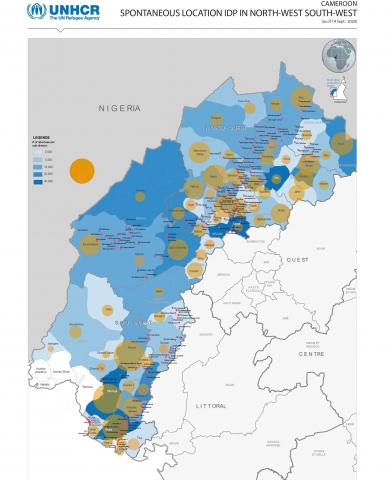Highlights
The confrontations between Government Security and Defense Forces (GDSF) and non-State armed groups continue in both the North-West and South-West regions , caused the displacement of least 48,114 people ( 9,623 households) from January to June 2021 (according to the IOM DTM) and humanitarian workers continue to contend with challenges in the discharge of their duties . As the recent incident in June shows, almost the entire village of Infung was burned down by herders during the battle, and much of the village lost its homes and possessions. Approximately 10,926 people were displaced, all of whom left in a hurry without the ability to carry household items. IDP are currently living under very deplorable conditions. some only manage to pin-up mosquito net that serve as their shelter, some sleep-in abandoned buildings while others are jampacked in host families with barely a limited area to lay on. Since they could not farm in their villages of origin and are many in host communities, they have very limited access to food. in term of prioritization, their pressing are foods, non-foods items, shelter, wash and health care assistance. Humanitarian needs continue to increase in North-West and South-West (NWSW) regions, requiring a coordinated and scaled up humanitarian assistance.
To meet humanitarian needs, between January and June 2021, humanitarian actors assisted a total of 58,600 individuals (11,720 households) of which 37,730 individuals (7,546 households) with shelter kits and 20,810 individuals (4,162 households) with Core Relief Items. These assistances are implemented in both regions NWSW by 5 partners (Plan International, DRC, NRC, SHUMAS and COHESODEC )
Between January and June 2021, Shelter responses represent for only 8% of population in need and shelter/NFI responses for 16% of the Humanitarian Response Plan's sectoral targets for 2021.

